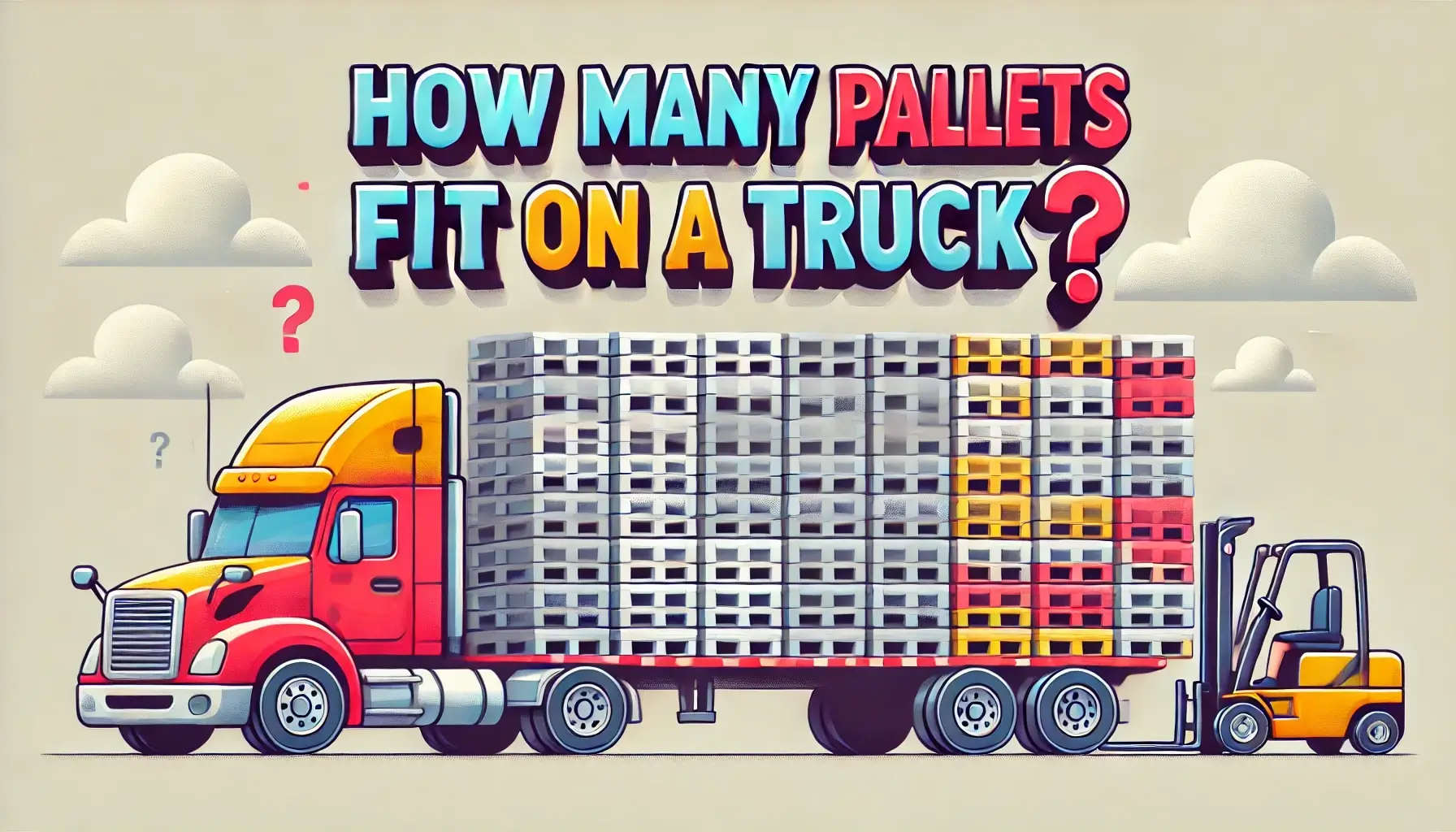This mainly depends on pallet size, how they are loaded, and stacking options. This report looks at the main factors that affect pallet capacity. It also offers exact calculations for different situations.
Standard Trailer Dimensions and Capacity
To find pallet capacity, first know the standard size of a 53-foot trailer. These specifications form the foundation for all loading calculations and optimization strategies.
Interior Dimensions
A standard 53-foot trailer typically has the following interior measurements:
- Length: 52-53 feet (approximately 636 inches)
- Width: 98-100 inches
- Height: 108-110 inches (9 feet)
- Door Opening: 93 inches wide × 105 inches high
- Cubic Capacity: Approximately 3,816-4,050 cubic feet
- Maximum Weight Capacity: 42,000-45,000 pounds
These dimensions provide the spatial constraints within which pallets must be arranged.
The trailer’s interior design can affect the space for pallet placement. Wheel wells and other obstructions play a big role in this.
Pallet Capacity for Standard North American Pallets
The Grocery Manufacturers Association (GMA) pallet is 48” × 40”. It is the most common pallet in North America.
The capacity for these standard pallets varies based on loading configuration.
Single-Layer Loading Configurations
For standard 48” × 40” North American pallets, several loading patterns are possible:
Straight Loading Pattern: 26 pallets
This configuration places pallets in a uniform direction
Calculation: 636 inches (trailer length) ÷ 48 inches (pallet length) = 13.25 rows
13 rows × 2 pallets side-by-side = 26 pallets total
Pinwheel Loading Pattern: 28 pallets
This method alternates the orientation of pallets to maximize space
Alternating the 48” and 40” sides lets more pallets fit in the trailer.
Turned Loading Pattern: 30 pallets
Rotating all pallets to optimize space utilization
This configuration can accommodate up to 30 standard pallets when properly executed
The straight loading pattern is the quickest and most common method. Pinwheel and turned configurations need more planning. However, they can boost capacity.
Double-Layer Loading (Stacked Pallets)
When pallets can be safely stacked on top of each other:
Straight Loading (Double Stacked): 52 pallets
26 pallets (base layer) × 2 layers = 52 pallets total
Pinwheel/Turned Loading (Double Stacked): Up to 60 pallets
30 pallets (base layer) × 2 layers = 60 pallets maximum
Stacking capability depends on the durability of goods, height constraints, and weight distribution.
The standard trailer height is about 9 feet. This height usually allows double stacking, as long as each pallet is no taller than 54 inches.
Capacity for Non-Standard Pallet Sizes
Pallet dimensions significantly impact trailer capacity.
Non-standard pallet sizes change how many pallets fit in a 53-foot trailer. Here’s the breakdown:
Capacity by Pallet Size (Single Layer)
36” × 36” Pallets: Approximately 34 pallets
Smaller dimensions allow for more efficient space utilization
42” × 42” Pallets: Approximately 30 pallets
These square pallets commonly transport paint, food and beverage products, and telecommunications materials
48” × 48” Pallets: Approximately 26 pallets
The square shape limits the number of pallets that can fit when loaded straight
48” × 45” Pallets: Approximately 28 pallets
The slightly narrower width allows for more efficient spacing
42” × 48” Pallets: Approximately 30 pallets when turned
Turning these rectangular pallets optimizes space utilization
Small changes in pallet size can greatly affect trailer capacity and loading efficiency.
Optimization Strategies for Maximizing Trailer Space
Loading Techniques
Pinwheeling: This technique uses alternating pallet orientations. Start with the 40” side, then switch to the 48” side. This helps use space better.
Properly executed pinwheeling can increase capacity from 26 to 28 pallets.
Turning: Shippers can fit 30 standard pallets in a 53-foot trailer. They do this by rotating all pallets to the best angle for the trailer size.
Strategic Placement: Place pallets carefully near trailer walls and doors. This helps use space wisely and keeps everything stable during transit.
Practical Considerations
When planning pallet loads, several factors beyond simple dimensions must be considered:
Weight Distribution: You can load more pallets, but weight limits may limit how many you can carry. For a 53-foot trailer, this limit is usually between 42,000 and 45,000 pounds.
Product Overhang: If products hang over the edges of a pallet, the dimensions grow. This can lower the number of pallets that fit in the trailer.
Height Limits: Stack pallets below 108-110 inches in the trailer.
Loading Efficiency: Pinwheel and turned setups hold more. However, they require extra time and skill to load correctly.
Straight loading offers the fastest loading process.
Useful Table Summarizing
| Pallet Size (inches) | Loading Method | Stackable? | Pallets per 53′ Trailer |
|---|---|---|---|
| 48 x 40 (Standard) | Straight | No | 26 |
| 48 x 40 (Standard) | Pinwheel/Turned | No | 28–30 |
| 48 x 40 (Standard) | Straight | Yes | 52 |
| 48 x 40 (Standard) | Pinwheel/Turned | Yes | 56–60 |
| 48 x 48 | Straight | No | 24–26 |
| 42 x 48 | Turned | No | 30 |
Just wanted to explain a few things about pallet loading. When we say “Pinwheel/Turned,” we mean how we turn pallets to use space better.
You can stack pallets if you have enough space. This depends on your product and the height of your trailer.
Remember, the number of pallets you can fit may vary. Factors include product overhang, pallet height, and the exact size of your trailer.



Leave a Reply